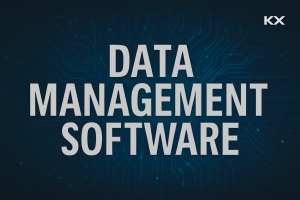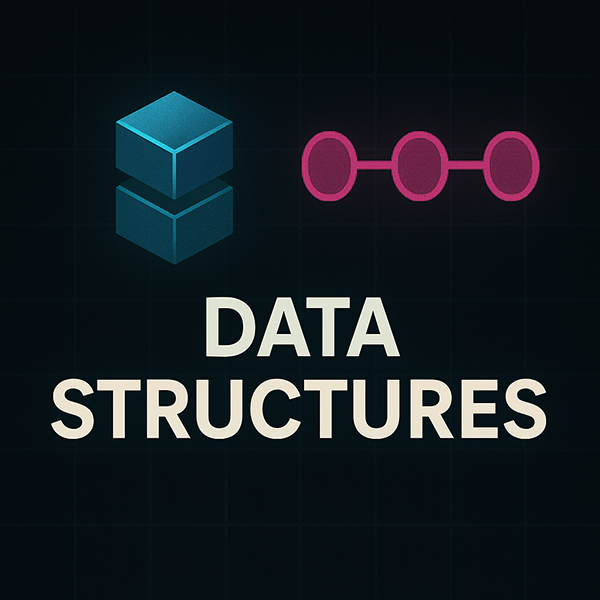Data automation shifts the way enterprises manage and act on information, replacing manual data tasks with intelligent systems that scale, adapt, and accelerate time to insight. For organizations such as trading desks, risk teams, and compliance officers, who are under pressure to process vast, fast-moving datasets automation isn’t just a time-saver. It’s the foundation for making accurate, timely decisions in environments where milliseconds matter.
Key takeaways
- Data automation replaces manual processes with rule-based systems that scale with your business
- Modern data automation reduces operational costs and improves the quality and consistency of your data
- Knowing what data automation is, and where it fits, is essential to modernizing your data architecture
- Automating data analytics workflows helps you generate insights faster and make decisions with greater confidence
- Implementing data automation platforms requires careful planning and governance
What is data automation?
Data automation is the use of software systems to extract, transform, validate, and route data across applications and environments without manual input. These systems replace hardcoded scripts and manual workflows with configurable logic that supports real-time or near-real-time data processing.
In enterprise environments, especially in capital markets, data automation reduces operational friction in high-frequency pipelines by enforcing schema validation, managing data lineage, and triggering downstream processes based on pre-set rules or event conditions.
Unlike simple task scheduling, modern data automation tools handle variable inputs, maintains referential integrity, and integrates with streaming and batch architectures. It allows teams to manage complex data workflows at scale while maintaining compliance, reliability, and performance across high-volume, low-latency environments.
Key elements of data automation
Effective data automation systems rely on a coordinated set of components that work together to ingest, transform, and distribute data at scale. These typically include:
- Ingestion frameworks that collect structured and unstructured data from disparate sources, including market feeds, internal systems, and third-party APIs
- Processing engines that clean, normalize, and enrich data using rule-based logic or machine learning models
- Orchestration tools that manage dependencies, trigger downstream tasks, and enforce sequencing across batch and streaming jobs
- Integration layers that ensure compatibility across data stores, analytics platforms, and reporting tools
- Monitoring and observability features that track performance, flag anomalies, and enable auditability across the entire pipeline
- Access control and data security to ensure compliance with regulations like MiFID II, GDPR, and FINRA, and to safeguard sensitive client or trade data
The most effective data automation platforms also support self-service tooling, allowing business users to configure or adapt workflows without writing code. This flexibility reduces bottlenecks and expands automation use beyond technical teams.
How data automation powers real-life business solutions
Data automation plays a critical role in operationalizing intelligence across capital markets and other data-intensive industries. When implemented correctly, it enables faster execution, improves data fidelity, and reduces human error in critical workflows.
Consider a few examples:
- Trade surveillance: Automated systems ingest and analyze order flow, transaction data, and communication logs in real time to flag anomalous behavior and potential regulatory breaches
- Risk management: Data pipelines continuously process market data, reference data, and position data to update risk models and generate alerts for limit breaches or portfolio exposures
- Quant research and strategy development: Automated workflows support the backtesting of trading strategies by normalizing historical tick data, applying model logic, and exporting performance metrics without manual intervention
- Regulatory reporting: Automation ensures that trade data is captured, validated, and formatted in compliance with requirements such as EMIR, MiFID II, and SFTR, significantly reducing reporting overhead
- Operational resilience: When integrated with real-time monitoring, automated pipelines can detect data quality issues, trigger failover protocols, and recover from faults with minimal downtime
Beyond capital markets, automation is driving similar gains in manufacturing, healthcare, energy, and government—wherever latency, data integrity, and compliance are mission-critical.
Key benefits of implementing data automation
Data automation delivers measurable impact across operational, analytical, and strategic layers of the enterprise. In capital markets, where latency, scale, and compliance converge, these benefits go beyond efficiency:
- Faster decision-making: Automated data flows reduce time to insight by removing manual delays in ingestion, processing, and distribution
- Improved data quality: Automation enforces consistent validation, cleansing, and transformation rules, reducing discrepancies across systems
- Operational efficiency at scale: Automated pipelines streamline routine data tasks and reduce the need for manual reconciliation, freeing teams to focus on higher-value analysis
- Stronger governance: Rule-based workflows improve auditability, data lineage tracking, and regulatory compliance across front, middle, and back office operations
- Better resource utilization: Technical and business users spend less time on data wrangling and more time driving outcomes
- Scalability and resilience: Automated systems can handle growing data volumes, diverse formats, and changing market conditions without performance degradation
In short, data automation creates the infrastructure for faster, more accurate, and more transparent decision-making, an essential capability for firms operating in volatile, data-driven markets.
Challenges and considerations in data automation
Data automation delivers strong benefits, but implementing it at scale requires careful planning. For firms in capital markets, these challenges often reflect the complexity of legacy infrastructure, regulatory demands, and the need for real-time responsiveness:
Legacy integration: Many organizations still depend on siloed or proprietary systems. Connecting data automation tools to these environments introduces technical debt, latency, and potential data loss if not properly managed.
- Data quality issues: Data automation magnifies problems in the source data. Without consistent validation and governance, poor data can lead to flawed analytics and regulatory exposure.
- Security and compliance risks: Automating workflows that touch sensitive trade or client data requires strict access controls, encryption, and audit trails to remain compliant with regulations like MiFID II and GDPR.
- Skills and adoption gaps: Data automation often introduces new technologies such as orchestration engines or low-code platforms. Teams must adapt quickly, and business processes may need to be restructured.
- Upfront cost and long-term scalability: While data automation improves efficiency over time, initial investment can be high. Systems must also scale to support larger datasets and new sources without degrading performance.
- Ongoing monitoring: Automated workflows are not set-and-forget. Failures in upstream data, infrastructure, or logic must be detected early to avoid downstream errors and operational risk.
When these challenges are addressed early, data automation becomes a reliable foundation for real-time analytics, regulatory reporting, and enterprise-wide data strategy.
The future of data automation: Trends to watch
As data volumes grow and latency requirements tighten, capital markets firms are rethinking how they deploy automation. The most forward-looking teams are focusing on six key trends:
Event-driven automation for real-time decisioning
Organizations are moving away from static batch jobs and toward data flows triggered by specific events. This model enables systems to act immediately on trade activity, pricing anomalies, or compliance triggers, improving both speed and accuracy.
Streaming-first architectures
Automation tools are evolving to handle data in motion, not just at rest. Streaming pipelines improve responsiveness, reduce duplication, and help maintain consistent signal quality across analytics and operational systems.
Hybrid and cloud-native pipelines
As firms modernize their infrastructure, cloud-native designs that use containers and orchestration tools provide flexibility and scale. These pipelines can adapt to changing workloads across on-premise and cloud environments without compromising performance.
Built-in observability and fault tolerance
Monitoring, alerting, and automated recovery are now essential features of production-grade automation. These capabilities help detect issues early, maintain uptime, and support compliance obligations that require traceability and auditability.
Configurable, domain-specific tooling
Developers and quants need automation systems that can be tailored to their workflows. The focus is on flexibility and transparency rather than generic low-code platforms, especially in high-risk environments where accuracy and control are critical.
Adaptive models with explainability
Firms are embedding machine learning into automated workflows to identify anomalies, prioritize data, and recommend actions. However, models must remain explainable, especially when they affect regulated processes or client outcomes.
These trends reflect a shift toward automation that is not only fast but also resilient, transparent, and aligned with real-world complexity.
Why data automation is critical for modern enterprises
Data automation has moved from optional enhancement to core infrastructure. As data volumes increase and regulatory pressure intensifies, manual processes can no longer support the speed, scale, or accuracy that modern firms require.
In capital markets, the ability to act on data in real time is now a competitive differentiator. Firms need to analyze streaming data, update risk models, and respond to market conditions without delay. Manual workflows introduce latency and increase operational risk, especially in functions like surveillance, reporting, and trading strategy development.
Automation also supports regulatory compliance by enforcing consistent data handling rules, maintaining lineage, and providing audit-ready records. Without automation, firms struggle to meet requirements like MiFID II, EMIR, and Dodd-Frank at scale.
Cost pressure is another driver. High-value resources, whether developers, analysts, or operations staff, should not be tied up with repetitive data tasks. Automation frees these teams to focus on model development, insight generation, and decision-making.
Most importantly, automation provides the foundation for digital transformation. Firms cannot build scalable analytics platforms, AI-driven strategies, or integrated risk systems if their data operations still rely on spreadsheets, email, and manual reconciliation.
Automation is not just a tool for efficiency. It is the infrastructure layer that enables firms to operate in real time, meet regulatory demands, and capitalize on market opportunity with confidence.
Frequently Asked Questions
Data automation delivers value across sectors, but it’s especially impactful in industries that manage large volumes of time-sensitive data. In capital markets, firms use automation to streamline trading operations, manage regulatory reporting, detect fraud, and power real-time analytics. Energy, healthcare, and government organizations also rely on automation for compliance and operational efficiency.
Looking to automate complex, high-volume data workflows?
KX powers automation for some of the world’s most data-intensive firms. Discover why capital markets leaders trust our platform to process, analyze, and act on real-time data with precision.





